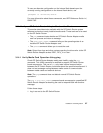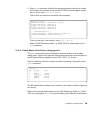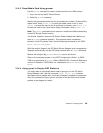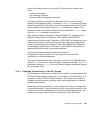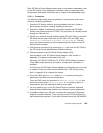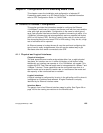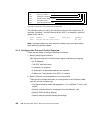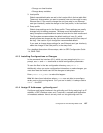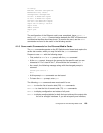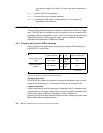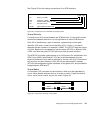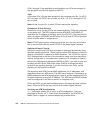
© Copyright IBM Corp. 1998 105
Chapter 4. Configuration of IP-Forwarding Media Cards
This chapter covers the installation and configuration of selected IP
Forwarding media cards in an SP Switch Router. For detailed information
refer to
GRF Configuration Guide 1.4
, GA22-7366.
4.1 Ethernet 10/100Base-T Configuration
This section provides the information needed to configure the Ethernet
10/100Base-T media card. It comes in two flavors, one with four ports and the
other with eight ports available. Configuration is the same for each type of
card. Each physical interface on them is capable of connecting to either 10 or
100 Mbits/s (autosensing and autonegotiation) and may operate half duplex
(HDX) or full duplex (FDX). So this is a point to take care of, as the ports of
the connecting devices must meet FDX or HDX setting, if they do not, a high
rate of collisions will be reported.
As Ethernet seems to be best known all over the world and configuring this
type of card is really straightforward, this will was the easiest way to get
interfaces other than switch connected to the GRF.
4.1.1 Physical and Logical Interfaces
Physical Interfaces
The dual-speed Ethernet media card provides either four or eight physical
interfaces. An interface can run in either full duplex or half duplex mode.
Additionally, an interface can operate at 10 or 100 Mbits/s, as needed. This
enables the GRF Fast Ethernet media card to interoperate with 10Base-T and
100Base-T devices. These capabilities can be configured to perform in a
specific mode and at a specific transfer rate, or to autosense the mode and
rate capacity of the connected host or network.
Logical Interfaces
A logical interface is configured by its entry in the grifconfig.conf file, where it
is assigned an IP address and netmask. A logical interface is uniquely
identified by its Ethernet interface name.
Interface Name
The generic form of an Ethernet interface name is ge0xy. See Figure 36 on
page 106 for the naming conventions on the Ethernet card.



